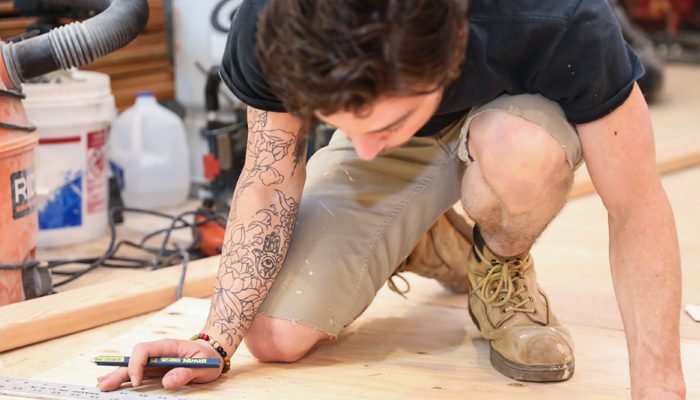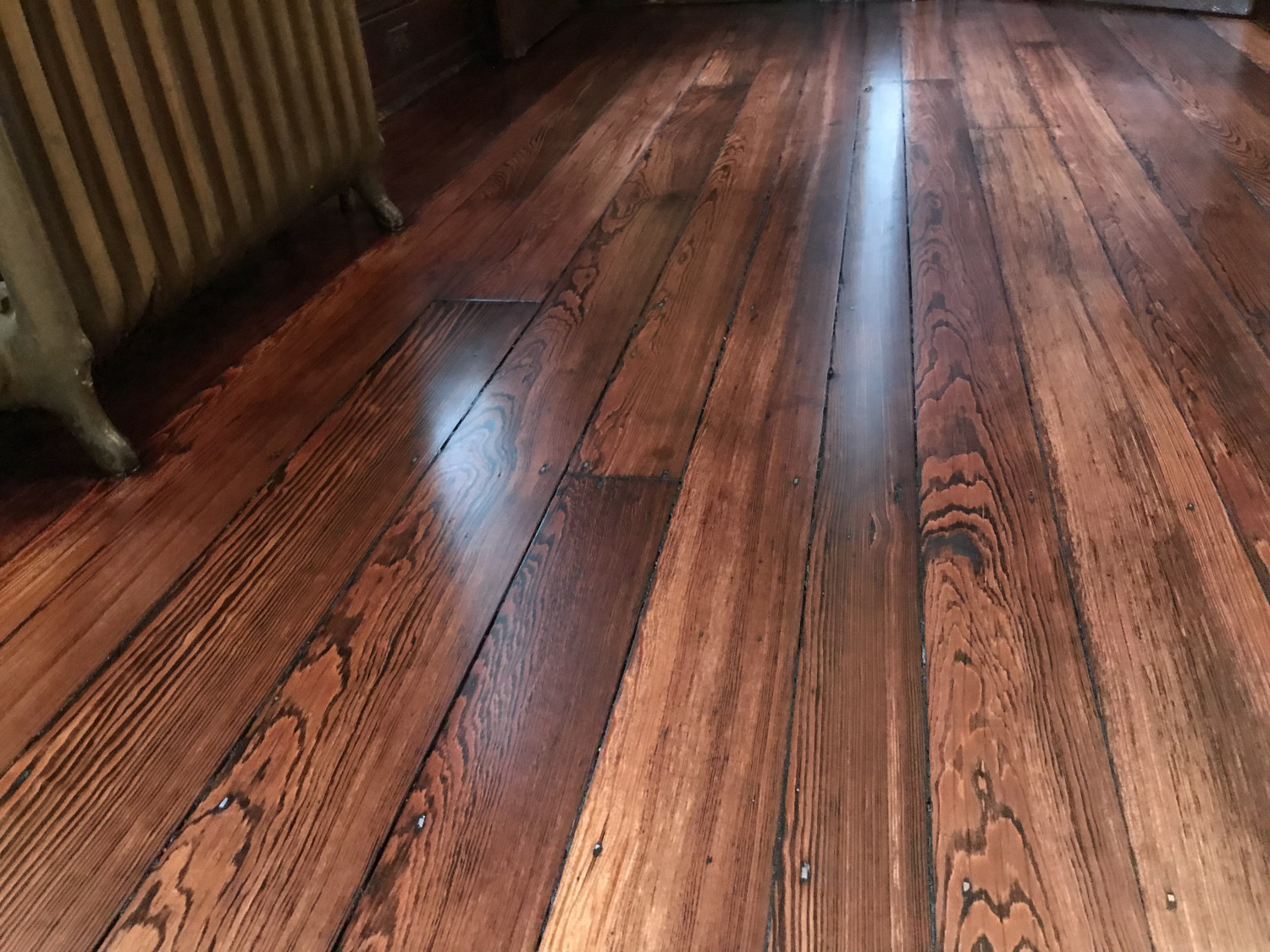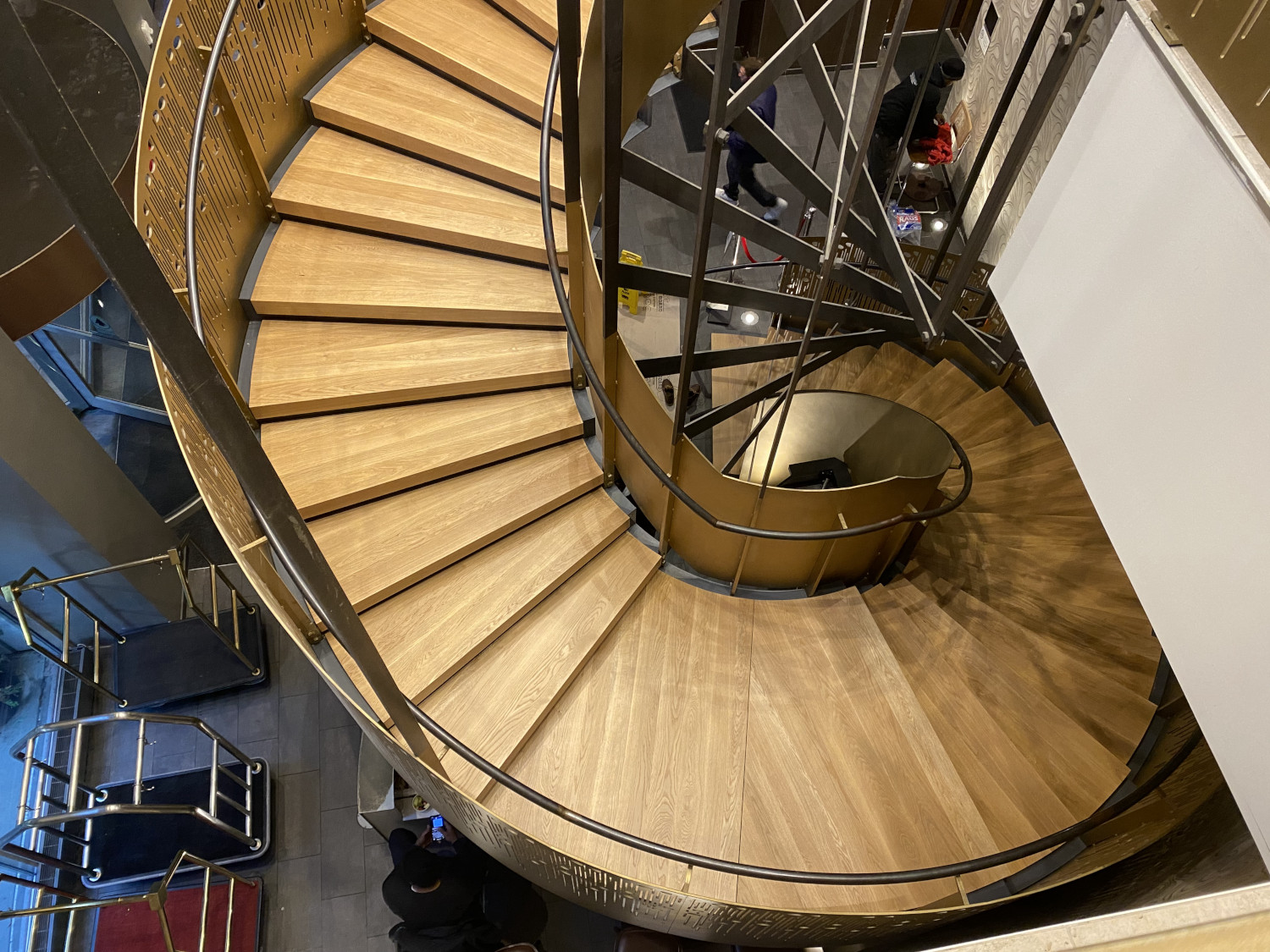How Can I Tell If The Hardwood Floors In My Home Are Thick Enough to Refinish?
Perhaps you are considering the installation of new wood floors to better match the look and feel of your home. Maybe you have existing hardwood flooring that, over time, has begun to appear worn out or scuffed up. Perhaps you are about to move into a new home, and the existing wood floors don’t suit your unique tastes. Regardless of the reason, many of these issues can be addressed by sanding down, staining, and refinishing the existing hardwood floors.
Refinishing your hardwood floors allows you to customize the wood and make it flow with the look and feel of your home. However, not all floors can be sanded down and refinished. In this article, we will help you determine whether or not refinishing your hardwood floors is the right decision for you or if it is even possible.

What is Wood Floor Refinishing?
Sanding and refinishing your hardwood floors gives your flooring a reset.
The top layer of your hardwood floor plank is known as the finish. It represents the defensive barrier protecting the wood from damage. In a refinishing project, you remove the floor’s finish and add a new finish layer.
Minor dings and scratches can also be removed when sanding the floor as part of the finishing process. A refinishing project brings new life to hardwood flooring. However, there are many things to consider when deciding whether to refinish your wood floors, including whether or not you should refinish them on your own or hire a Philadelphia wood floor sanding expert to do the job for you.
Do My Floors Need Refinishing?
Aside from the general look of your existing hardwood flooring, you can perform a test to assess its overall condition and determine whether or not refinishing is necessary. The “water test” is the most popular.
Pour just a spoonful of water onto your hardwood floor to perform this test. Your finish is in good shape if droplets form and stay on the floor’s surface. However, if the wood slowly absorbs the water, your finish has worn away and requires hardwood floor restoration. On the other hand, if the wood soaks up the water quickly, leaving behind a dark stain, there is no finish left, and you should refinish your hardwood floors as soon as possible.
Once the test is complete, you can use a paper towel to wipe away any excess water and repeat this test in other areas. In some cases, you may be able to refinish only the worst sections of your wood floor.
What Type of Wood Floor Do I Have?

When planning a refinish, the first order of business will be determining what type of wood flooring you have. Next, you will need to determine whether the wood floors in your house are solid hardwood or engineered wood. That is an essential distinction because engineered flooring cannot be sanded and refinished like solid hardwood flooring can.
The easiest way to determine if your wood floor is made of hardwood or engineered wood is to remove a loose plank and look at its cross-section. It is solid hardwood if the wood is solid with a continuous grain. If different layers of wood are visible, like layers of plywood pressed together, you are looking at an engineered wood floor.
If removing a plank from your existing floor is not feasible, look for any vents or registers on the floor and remove the cover. That is another good way to determine because, from this vantage point, you should be able to see a cross-section of the wood. You can also perform this check at an exterior doorway, removing the metal saddle from the floor and exposing the wood.
Is My Wood Floor Thick Enough To Refinish?
Photo by Caramel Quin from The Guardian
This method of determining if your floors are hardwood or engineered is also a great way to tell if the boards are thick enough to refinish.
When it comes to engineered floors, the thickest types can be sanded and finished between three and five times because of their 4mm to 6mm wear layer. On the other hand, engineered wood flooring with a wear layer of 2mm or less cannot be sanded down entirely but can take a light scuff-sanding using a buffer, and then it can be refinished.
A hardwood plank at full thickness should withstand between six to ten refinishes throughout its lifetime. Generally, these are 3/4 of an inch thick. However, homes built before the 1920s often have historical wood floors that are only 1/4 to 3/8 of an inch wide due to different milling standards. As a result, these floors can only handle a complete wood floor sanding and refinishing two or three times. If your floors are made of older hardwood and have already been refinished once or twice, they typically are not suitable for a full refinish because they are likely too thin.
What If My Wood Floor Is Too Thin For Refinishing?
Sanding wood floors that are too thin can lead to splintering and other types of hardwood floor damage. Since most hardwood planks are manufactured with tongue and groove to interlock, it is necessary to leave at least 1/8 of an inch of wood at the top of the board, above the tongue and groove, for a complete refinish. It may be possible to refinish the floors if the boards are thinner than 1/8 inch.
One way to assess the thickness of your wood floorboards is by performing what is known as the “business card test.”
Look for an area with a gap between floorboards, stick a business card into the crack as far as you can, and then mark the card with a pencil at the floor’s edge. Next, remove the business card and measure the distance between the line and the edge of the card. If the measurement is less than 3/4 inch, your wood floor is either too worn or too thin to refinish.
Regardless of the thickness of the hardwood flooring you have, hiring a professional, rather than attempting to do it yourself, is always your best bet when refinishing a wood floor.
Another option when dealing with floors that are too thin for sanding is floor screening. A floor screening removes the existing finish layer and doesn’t take off any of the wood. Once the finish is removed, the flooring is given another few coats of finish to breathe life into it and keep your floor looking new.
Even if they are thick enough to refinish, the affected boards may need to be entirely replaced if your hardwood floors have sustained any water damage or have been stained by pet urine or other messes. Sanding and refinishing will not eliminate urine stains (or odors) from the floorboards, and it likely won’t be able to fix warps from the moisture associated with long-term water damage. However, you may be able to remove less significant stains as part of the refinishing process.
It should go without saying that when caring for your wood floors, you must always clean up any liquid or pet messes on a hardwood floor as quickly as possible to prevent long-term damage.

Do I Need A Professional To Refinish My Wood Floors?
Whether you can determine if your floors are thick enough to hold up in a refinishing project, sometimes it is best to call a professional to ensure that you will not damage the floors by trying to take on the job yourself.
When it comes to wood floors, you must never start refinishing your floors before you are sure the boards have enough wood to handle the refinishing. That is especially true if you refinish a hardwood floor in an old home. When you refinish floors that are too thin, you not only risk splintering the wood, but you can expose nails. A botched refinishing job can also lead to unsafe floors, and you can even cause enough damage to warrant an entire new floor.
Replacing your entire wood floor will undoubtedly cost you a lot more than it will cost to have a professional examine your floors first. When you contact the PA wood floor sanding and refinishing experts at Artisan Wood Floors, you can trust that you are getting an experienced wood floor professional to help you decide if a repair or sand and refinish is the best course of action.
Call Artisan Wood Floors today at (215) 515-7355 and ask for Steve!
1 Comment
Submit a Comment
Recent Hardwood Flooring Projects in Philadelphia & NJ




Thank you for such a great write up. Refinishing is easier to do than replacing the flooring, requires less time and is less expensive. Not only will it increase the value of your home, but if you plan to sell it at some point, beautiful refinished flooring is attractive to potential buyers and will allow you to establish a higher price for your home.